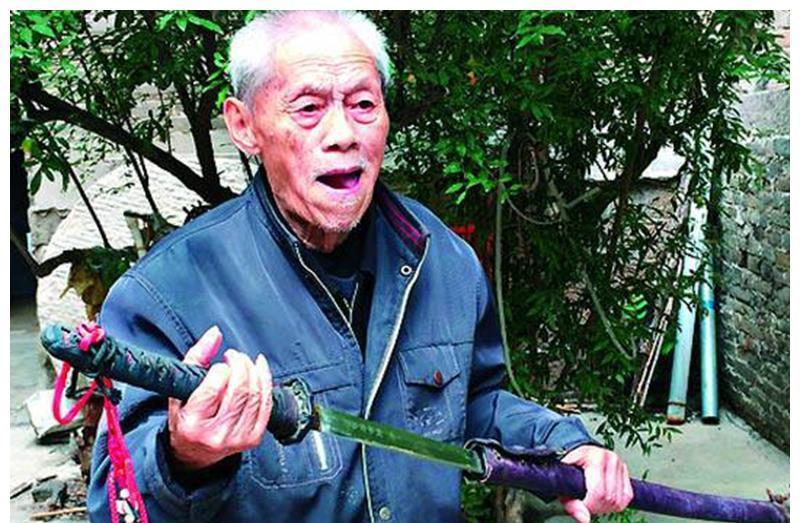As we all know, our country has never lacked heroes, especially during the War of Resistance Against Japan, our country was invaded by Japan, and at this stage, our sons and daughters of China gave birth to countless heroes, who wrote stories that can be sung and wept. Today we will talk about a hero during the anti-Japanese war, his name is Hou Yongsheng: he captured a Japanese saber, the Japanese wanted to redeem it at a high price, he refused to bite it, and now it is hidden in the museum.
Who is Hou Yongsheng? How could he have captured the Japanese saber? To know that the Japanese saber is a symbol of Japanese officers, officers are well protected in battle, and they will not be injured easily, so how did Hou Yongsheng capture this precious Japanese saber?

This must start from Hou Yongsheng's enlistment experience. Hou Yongsheng was born in 1926, he is a native of Hebi City, Henan Province, his original family is very poor, he has not read for several years, he has been herding sheep and cattle since he was a child, and he has lived a life of eating and eating without eating. However, these difficulties did not knock down Hou Yongsheng, and he gradually became a person who refused to give up lightly in the process of growing up. And because of his experience as a child, Hou Yongsheng practiced excellent aiming skills, which laid the foundation for him to join the army in the future.
In 1938, when the Japanese began to attack Henan, Hou Yongsheng was only 12 years old, although he was only a child, but after seeing what the Japanese were doing, Hou Yongsheng was extremely angry and vowed to eliminate the Japanese devils. Because of his childhood experience, Hou Yongsheng was particularly interested in shooting, and with the help of his comrades-in-arms, Hou Yongsheng practiced shooting skills assiduously, and soon became a sharpshooter in a hundred shots.
In 1945, the Japanese army in JunXian County, Hebi City, and Hou Yongsheng's troops went to war, Hou Yongsheng ambushed near the battlefield as a sniper, at this time, a Japanese soldier riding a high-headed horse rushed over, Hou Yongsheng raised his gun, and shot the Japanese soldier off his horse.
At that time, Hou Yongsheng did not know the identity of this Japanese soldier, according to Japanese rules, only officers could ride horses, so there was no doubt that this Japanese soldier was an officer. It was precisely because he was an officer that Hou Yongsheng was able to capture the Japanese saber on him.
The saber captured by Hou Yongsheng is more than 1 meter long, and the words "Emperor 45997" and "Sakamoto Yoshitaro" are engraved on the knife, and I think these contents should be the number of the saber and its owner.
After the war, because of Hou Yongsheng's special contribution, his superiors rewarded him with this saber as a souvenir. After the war, japan learned that Hou Yongsheng had such a saber in his hand, so he wanted to redeem it at a high price. In the 1990s, Japanese businessmen bid 200,000 yuan to buy back the saber. You must know that 200,000 yuan at that time was a sky-high price, but Hou Yongsheng refused, saying that this was evidence of Japan's invasion of China and must be retained by China.
Today, the saber, which was used as evidence of Japan's invasion of China, was donated by Hou Yongsheng to the local museum, and it is collected in the museum, becoming one of the evidences that witnessed that historical period.